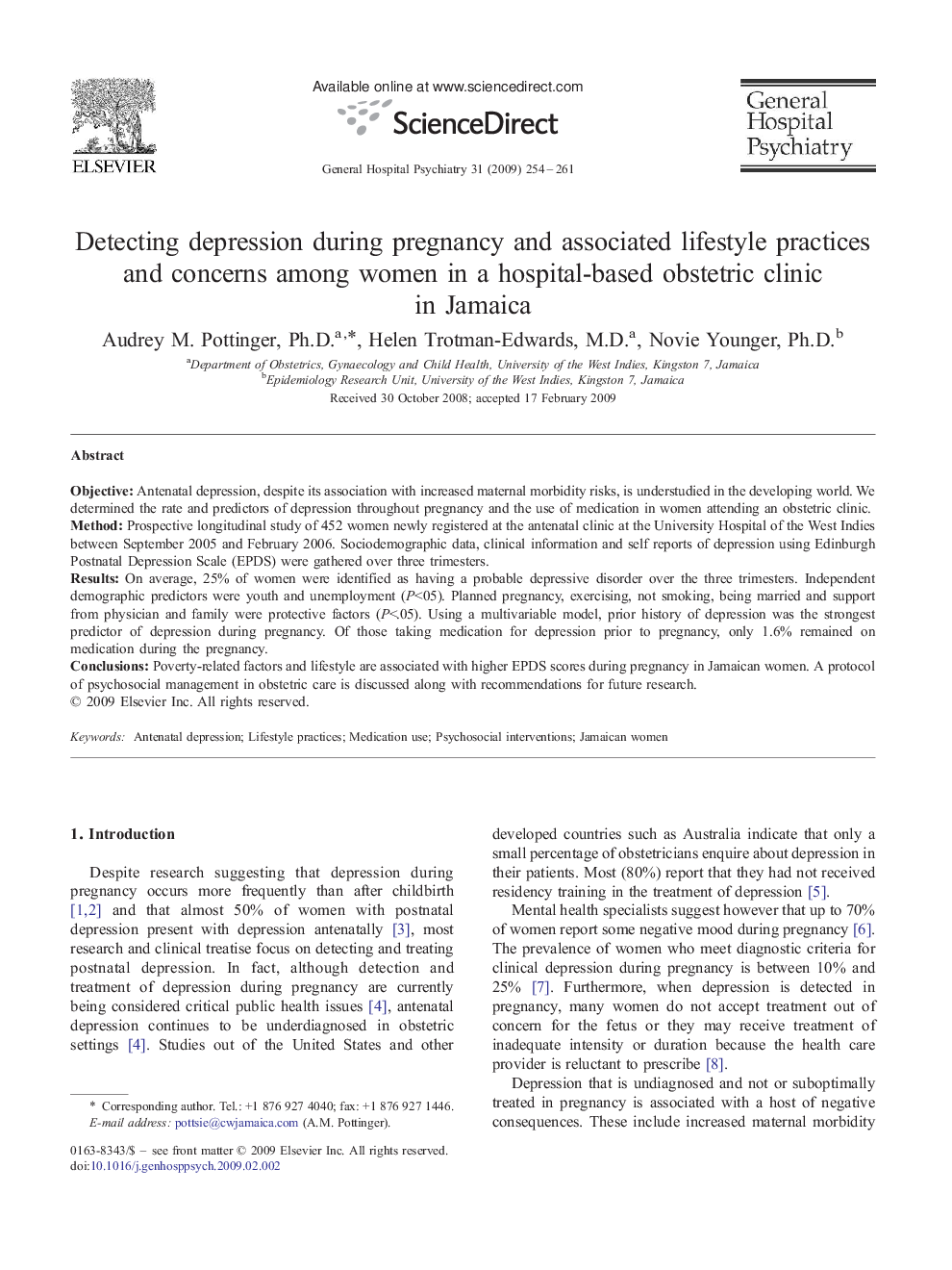| Article ID | Journal | Published Year | Pages | File Type |
|---|---|---|---|---|
| 3237977 | General Hospital Psychiatry | 2009 | 8 Pages |
ObjectiveAntenatal depression, despite its association with increased maternal morbidity risks, is understudied in the developing world. We determined the rate and predictors of depression throughout pregnancy and the use of medication in women attending an obstetric clinic.MethodProspective longitudinal study of 452 women newly registered at the antenatal clinic at the University Hospital of the West Indies between September 2005 and February 2006. Sociodemographic data, clinical information and self reports of depression using Edinburgh Postnatal Depression Scale (EPDS) were gathered over three trimesters.ResultsOn average, 25% of women were identified as having a probable depressive disorder over the three trimesters. Independent demographic predictors were youth and unemployment (P<05). Planned pregnancy, exercising, not smoking, being married and support from physician and family were protective factors (P<.05). Using a multivariable model, prior history of depression was the strongest predictor of depression during pregnancy. Of those taking medication for depression prior to pregnancy, only 1.6% remained on medication during the pregnancy.ConclusionsPoverty-related factors and lifestyle are associated with higher EPDS scores during pregnancy in Jamaican women. A protocol of psychosocial management in obstetric care is discussed along with recommendations for future research.
